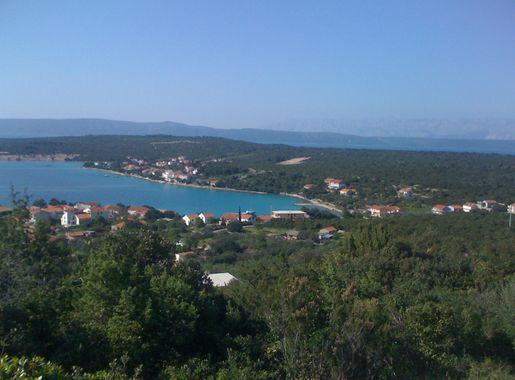
Discover the Enchanting Peljesac Peninsula
Experience the serene beauty and rich heritage of Peljesac Peninsula, Croatia's hidden gem, known for its stunning landscapes, historic sites, and exquisite wines.
The Peljesac Peninsula in Croatia is a hidden gem waiting to be explored. This picturesque region offers a perfect blend of natural beauty, rich history, and vibrant culture. Stretching into the Adriatic Sea, Peljesac is known for its dramatic landscapes, dotted with charming villages, lush vineyards, and pristine beaches. It is a haven for travelers seeking peace and tranquility away from the bustling tourist hotspots. One of the highlights of the Peljesac Peninsula is its vineyards and wineries. The region is famous for its production of high-quality wines, particularly the robust red wine known as Plavac Mali. Visitors can embark on wine-tasting tours, where they can savor the flavors of locally produced wines while enjoying the stunning views of the rolling vineyards. History enthusiasts will find much to admire in Peljesac. The medieval town of Ston, located at the entrance of the peninsula, is home to the impressive Ston Walls, which are the second-longest defensive walls in the world. The town is also famous for its ancient salt pans, which have been in use since Roman times. Exploring these historical sites offers a glimpse into the peninsula's rich past. Nature lovers will be captivated by the diverse landscapes of Peljesac. The peninsula is home to Mount Sveti Ilija, the highest peak in the region, offering breathtaking panoramic views. The crystal-clear waters of the Adriatic Sea are perfect for swimming, snorkeling, and sailing. Hidden coves and secluded beaches provide the ideal setting for a relaxing day by the sea. Culinary delights await visitors in Peljesac, where the local cuisine is a blend of Mediterranean flavors and fresh seafood. Indulge in dishes like grilled fish, octopus salad, and the famous oysters from Mali Ston Bay. Pair your meal with a glass of local wine for an unforgettable dining experience.
Local tips in Peljesac Peninsula
- Visit the vineyards in the morning to enjoy a more personalized wine-tasting experience.
- Pack comfortable hiking shoes for exploring the Ston Walls and Mount Sveti Ilija.
- Try to visit during the oyster harvest season from September to April for the freshest oysters.
- Rent a car to explore the peninsula at your own pace and discover hidden gems along the way.
- Carry a swimsuit and snorkeling gear to enjoy the crystal-clear waters and hidden coves.
- Visit local markets to buy fresh produce and handmade souvenirs.
Discover the Enchanting Peljesac Peninsula
The Peljesac Peninsula in Croatia is a hidden gem waiting to be explored. This picturesque region offers a perfect blend of natural beauty, rich history, and vibrant culture. Stretching into the Adriatic Sea, Peljesac is known for its dramatic landscapes, dotted with charming villages, lush vineyards, and pristine beaches. It is a haven for travelers seeking peace and tranquility away from the bustling tourist hotspots. One of the highlights of the Peljesac Peninsula is its vineyards and wineries. The region is famous for its production of high-quality wines, particularly the robust red wine known as Plavac Mali. Visitors can embark on wine-tasting tours, where they can savor the flavors of locally produced wines while enjoying the stunning views of the rolling vineyards. History enthusiasts will find much to admire in Peljesac. The medieval town of Ston, located at the entrance of the peninsula, is home to the impressive Ston Walls, which are the second-longest defensive walls in the world. The town is also famous for its ancient salt pans, which have been in use since Roman times. Exploring these historical sites offers a glimpse into the peninsula's rich past. Nature lovers will be captivated by the diverse landscapes of Peljesac. The peninsula is home to Mount Sveti Ilija, the highest peak in the region, offering breathtaking panoramic views. The crystal-clear waters of the Adriatic Sea are perfect for swimming, snorkeling, and sailing. Hidden coves and secluded beaches provide the ideal setting for a relaxing day by the sea. Culinary delights await visitors in Peljesac, where the local cuisine is a blend of Mediterranean flavors and fresh seafood. Indulge in dishes like grilled fish, octopus salad, and the famous oysters from Mali Ston Bay. Pair your meal with a glass of local wine for an unforgettable dining experience.
When is the best time to go to Peljesac Peninsula?
Iconic landmarks you can’t miss
Stonske zidine
Discover the impressive Stonske Zidine, Croatia's magnificent medieval walls, offering breathtaking views and a rich historical tapestry.
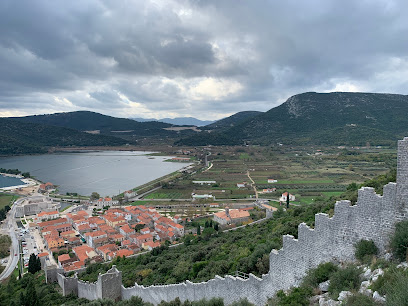
Pelješac
Explore Pelješac Peninsula: A stunning Croatian destination known for its beautiful landscapes, rich vineyards, and vibrant coastal towns.
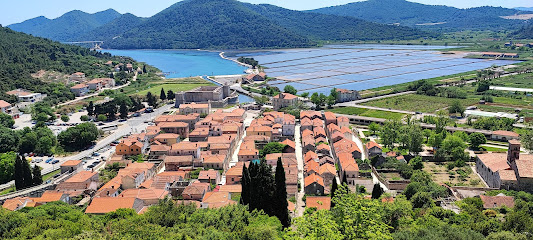
Koruna Fort
Explore Koruna Fort in Mali Ston: A historical gem offering stunning views and rich cultural heritage amidst Croatia's enchanting landscape.
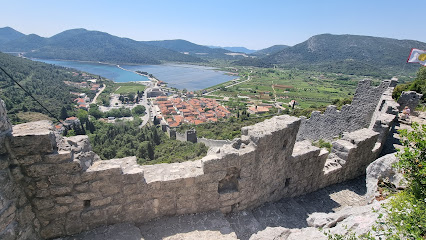
Dingač Tunnel
Explore the Dingač Tunnel, a historic landmark on Pelješac, where stunning views and rich heritage await every traveler.
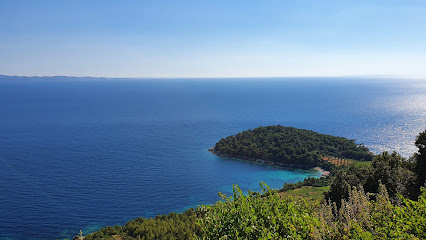
Sveti Ilija 961m
Discover the breathtaking beauty of Sveti Ilija, the highest peak on the Pelješac Peninsula, where stunning views and unforgettable hikes await.
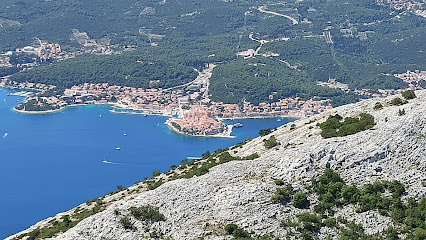
Sveti Ilija
Discover the breathtaking views and serene hiking trails at Sveti Ilija, a majestic mountain peak near Podgorje, Croatia.
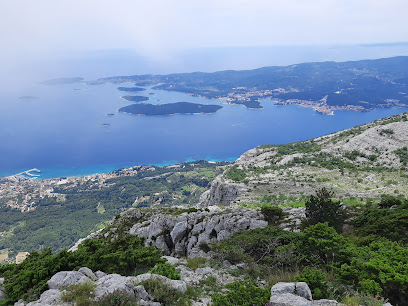
Winery Bartulovic
Experience the charm of Winery Bartulovic in Pelješac, where exquisite wines meet breathtaking landscapes in a family-run vineyard.
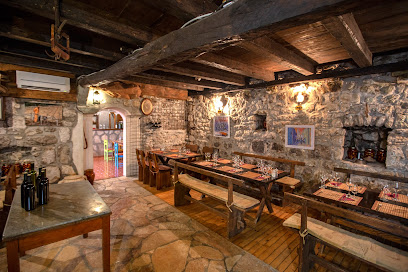
Sunken ship
Explore the enchanting Sunken Ship in Donja Banda – a captivating underwater attraction perfect for adventure seekers and history buffs alike.
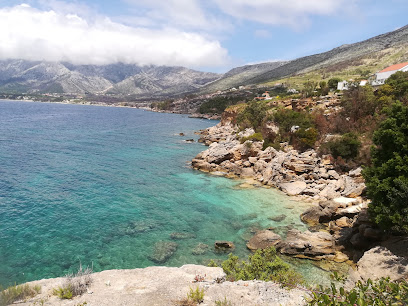
Svjetionik Lovište
Discover the stunning Svjetionik Lovište lighthouse on Pelješac Peninsula, a serene escape with breathtaking views and rich maritime history.
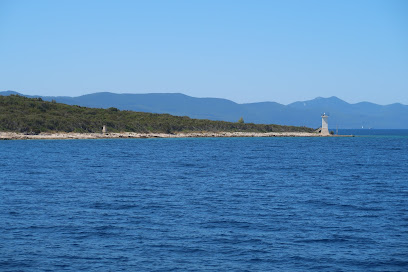
Pelješac Peninsula
Explore the breathtaking Pelješac Peninsula: a jewel of Croatia with stunning landscapes, rich history, and delightful wines.
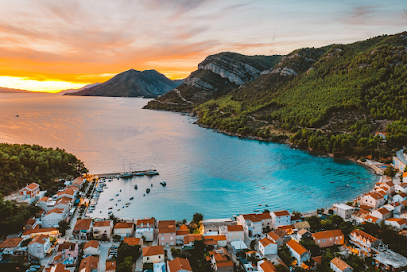
Poluotok Peljesac
Explore the stunning landscapes, rich history, and world-renowned wines of Poluotok Peljesac, a hidden gem on Croatia's Adriatic coast.
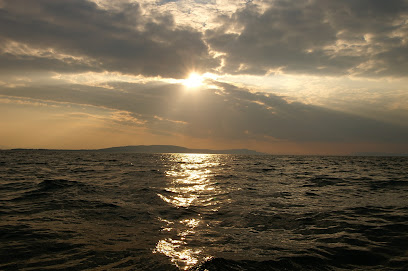
Kulturno povijesna cjelina Orebić
Explore the stunning heritage of Kulturno povijesna cjelina Orebić, a captivating tourist attraction in the heart of beautiful Orebić, Croatia.
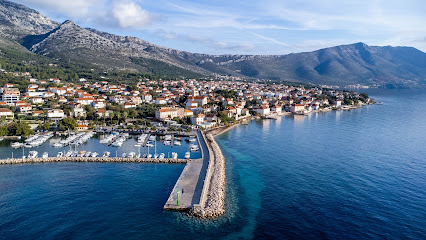
Unmissable attractions to see
Apparition Hill
Explore Apparition Hill in Medjugorje, a serene pilgrimage site renowned for its spiritual significance and breathtaking natural beauty.
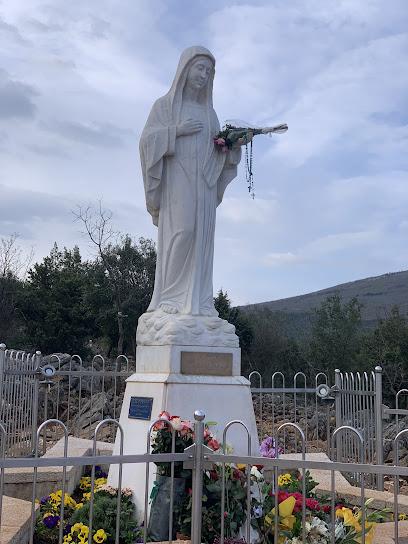
Cave Bar More
Experience the magical ambiance of Cave Bar More in Dubrovnik, where exquisite drinks and stunning natural beauty come together for an unforgettable evening.

Počitelj Fortress
Explore the historical wonders and breathtaking views of Počitelj Fortress, a UNESCO World Heritage site in Bosnia and Herzegovina.

Red History Museum
Explore the captivating history of the former Yugoslavia at the Red History Museum in Dubrovnik, where the past meets the present.

Kaštio Fort
Explore the rich history and breathtaking views from Kaštio Fort, a must-visit fortress in Ston, Croatia, offering a glimpse into the past.
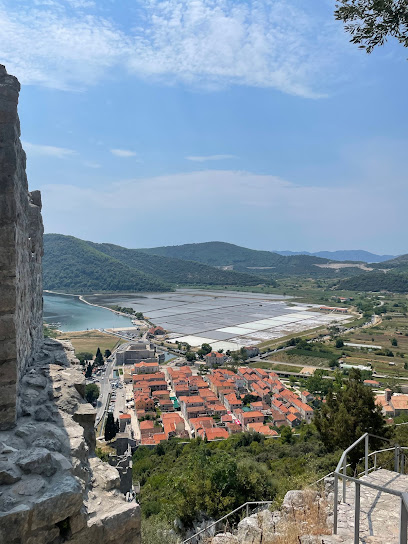
Žuljana plaža
Experience the serene beauty of Žuljana Beach, a hidden gem on the Dalmatian coast, perfect for relaxation and outdoor adventures.
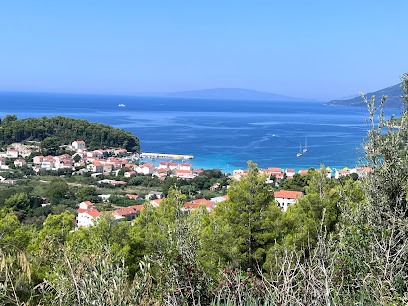
Marlais Winery
Explore the enchanting Marlais Winery in Boljenovići, where exquisite wines and stunning landscapes create unforgettable memories for every visitor.
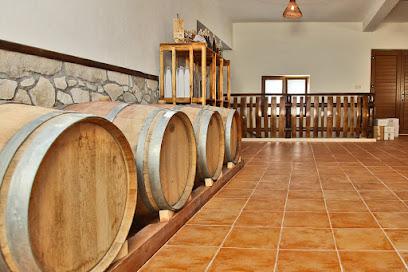
Bire winery
Experience the exquisite wines and stunning landscapes at Bire Winery in Lumbarda, a true highlight for wine lovers visiting Croatia.
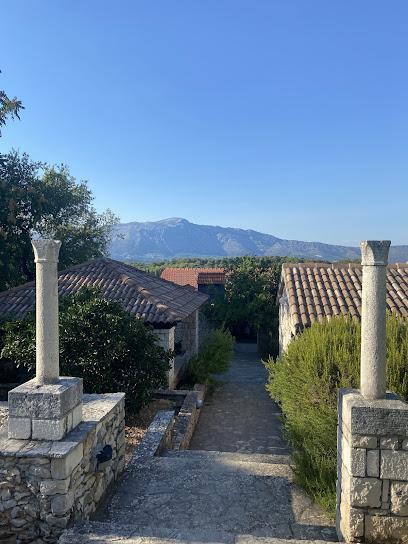
Tasovac winery
Discover the exquisite flavors of Korčula at Tasovac Winery, where tradition meets breathtaking landscapes and exceptional wines.
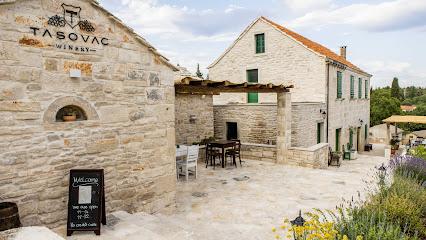
Vučine FKK beach
Experience the beauty and freedom of Vučine FKK Beach in Žuljana, Croatia, a perfect retreat for naturists and nature lovers alike.
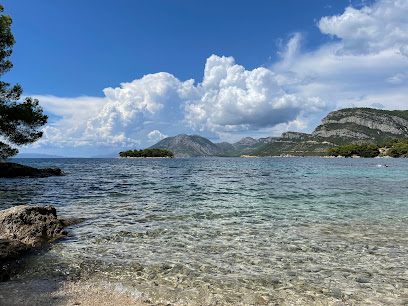
Kolocep Lighthouse
Explore the enchanting Kolocep Lighthouse, a historical gem on Kolocep Island, offering stunning views of the Adriatic Sea and a glimpse into maritime history.
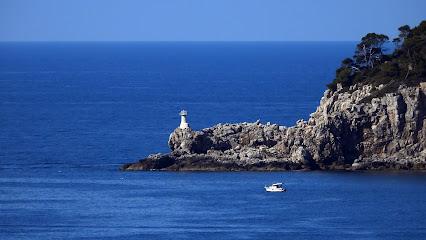
Zaton Water Sports
Dive into adventure at Zaton Water Sports in Dubrovnik, where thrilling boat tours and water sports create unforgettable experiences on the Adriatic Sea.
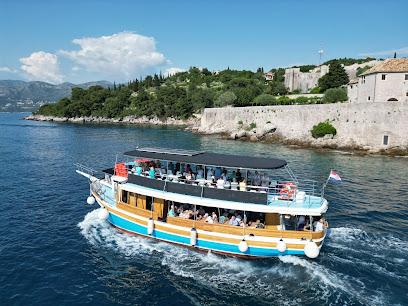
Svjetionik Lovište
Discover the serene beauty of Svjetionik Lovište, a charming lighthouse on the Pelješac Peninsula with breathtaking views of the Adriatic Sea.
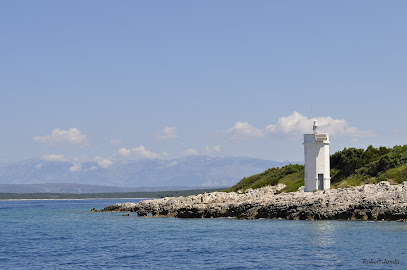
Uvala Prapratno
Discover Uvala Prapratno, a tranquil bay in Metohija, Croatia, perfect for relaxation, adventure, and breathtaking natural beauty.
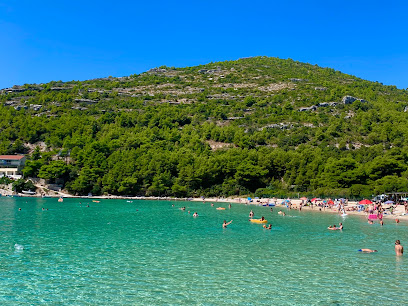
Punkt widokowy
Experience the mesmerizing beauty of the Adriatic Sea at Punkt widokowy in Kuna Pelješka, a must-visit viewpoint for breathtaking panoramic views.
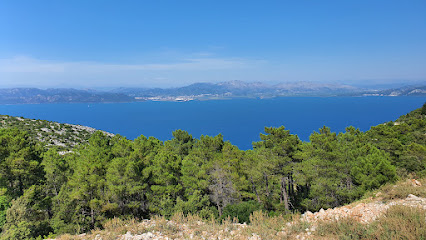
Essential places to dine
Kapetanova kuća
Discover authentic Mediterranean cuisine at Kapetanova kuća in Mali Ston – a culinary haven by the sea offering fresh seafood and local delights.
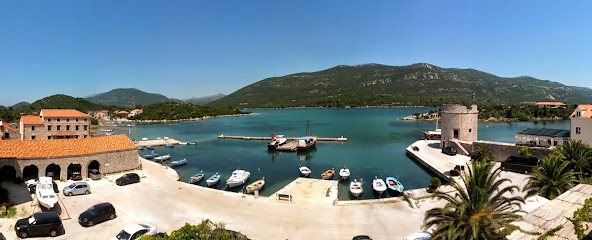
Konoba Bakus
Experience authentic Croatian cuisine at Konoba Bakus in Ston – where fresh seafood meets traditional flavors in a cozy atmosphere.
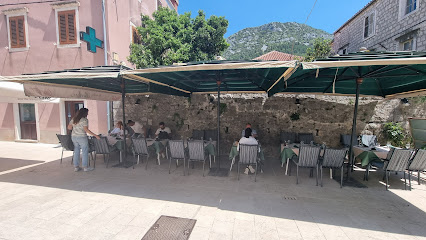
Bota Šare Mali Ston restaurant & oyster bar
Discover Bota Šare in Mali Ston - where fresh seafood meets stunning Adriatic views for an unforgettable dining experience.
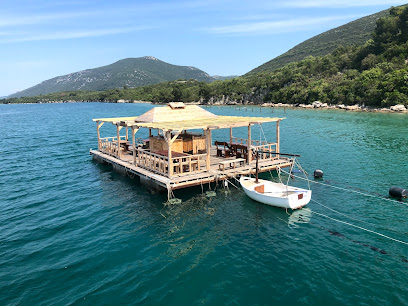
Konoba Portun
Discover authentic Croatian cuisine at Konoba Portun in Potomje - where every dish tells a story.
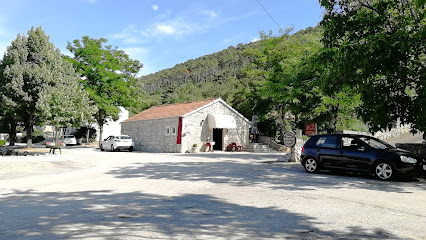
Seosko domaćinstvo Ficović
Experience authentic Croatian cuisine at Seosko domaćinstvo Ficović in Ston—where every dish tells a story.
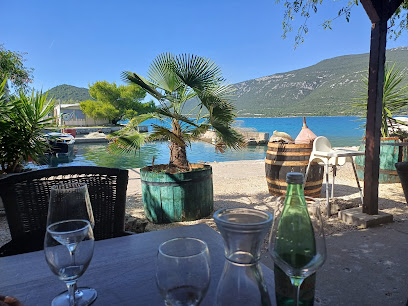
Čiringito
Discover culinary excellence at Čiringito in Viganj - where fresh ingredients meet breathtaking views.

Braenović restaurant
Experience authentic Croatian flavors at Braenović Restaurant in Potomje, where each dish tells a story of tradition and quality.
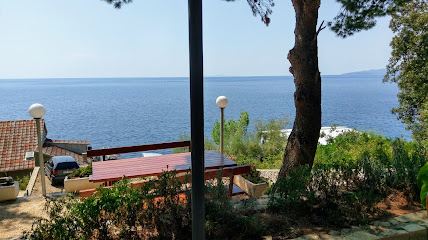
Konoba Škojera Trpanj
Experience exquisite fine dining at Konoba Škojera Trpanj with locally sourced dishes and exceptional service in Croatia's charming coastal town.
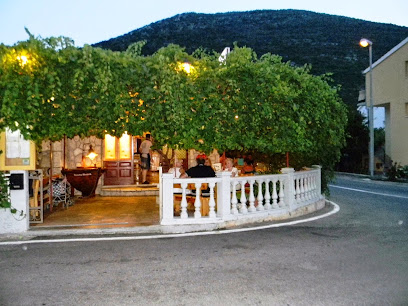
Old Captains Restaurant
Experience exquisite seafood dining at Old Captains Restaurant in Orebić, where fresh flavors meet stunning Adriatic views.
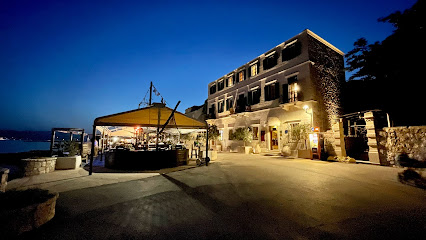
Restaurant Matusko
Experience authentic Croatian cuisine at Restaurant Matusko in Potomje - where local flavors meet stunning scenery.
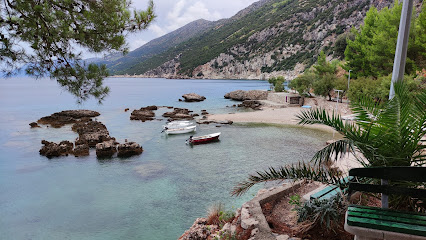
Konoba Dalmatinska kuca
Experience authentic Dalmatian flavors at Konoba Dalmatinska Kuca in picturesque Janjina - a must-visit for food lovers exploring Croatia.
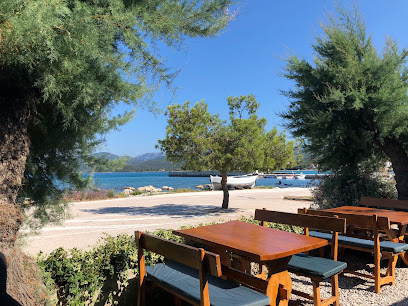
Konoba Mandrač
Discover authentic Croatian flavors at Konoba Mandrač in Broce – a must-visit restaurant for food lovers exploring Croatia's coastal gems.
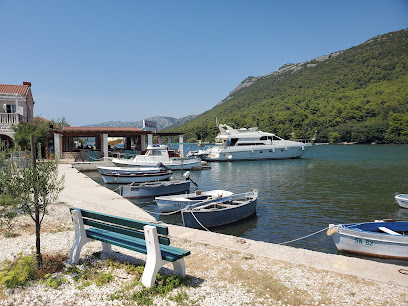
Konoba Baća
Experience authentic Croatian flavors at Konoba Baća in Ston, where fresh ingredients meet traditional recipes for an unforgettable meal.
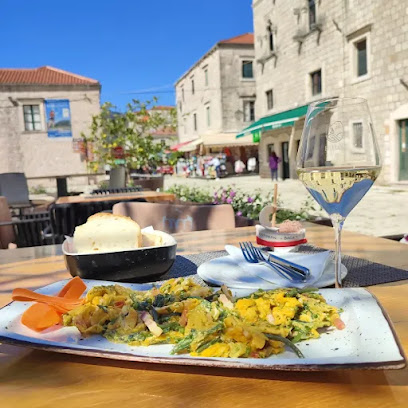
Estravaganca
Discover Estravaganca in Lovište - where fresh ingredients meet stunning coastal views for an unforgettable dining experience.
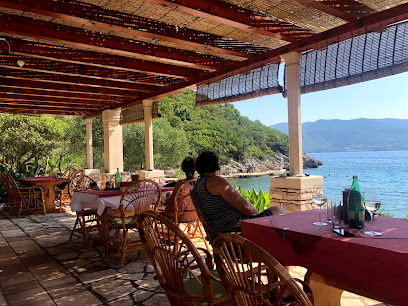
Konoba Panorama
Experience breathtaking views and authentic Croatian cuisine at Konoba Panorama in Podgorje.
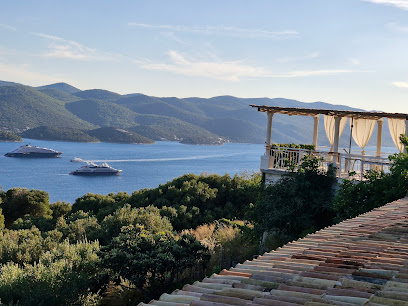
Markets, malls and hidden boutiques
Tommy
Explore the vibrant flavors and local products at Tommy Supermarket in Ston, Croatia - your one-stop shop for all essentials.
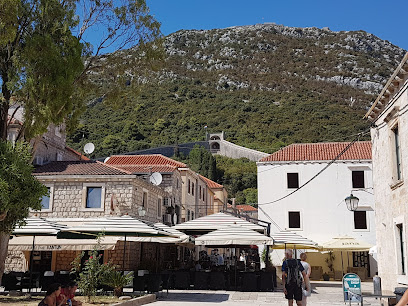
STUDENAC MARKET
Experience the local flavors and essentials at Studenac Market, a charming grocery store in the heart of Janjina, Croatia.

Wine Shop Skaramuča
Explore the rich flavors of Croatia at Wine Shop Skaramuča, your destination for exquisite local wines in Pijavičino.
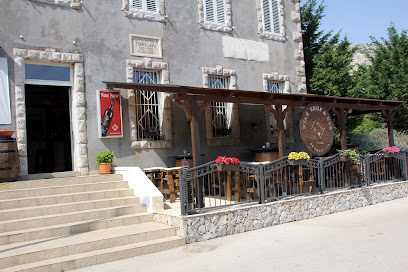
Coral Shop Irena
Explore unique handcrafted treasures at Coral Shop Irena, a charming store in the heart of Korčula, perfect for memorable gifts.
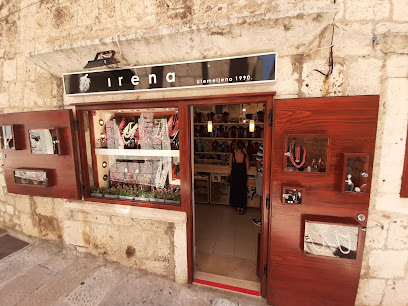
Palačinkarnica Garfield
Discover the sweet taste of Croatia at Palačinkarnica Garfield, where pancakes and pastries meet stunning Adriatic views.
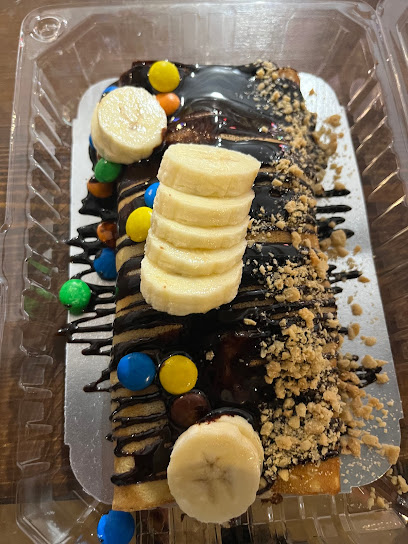
Bura winery
Experience the magic of Croatian wines at Bura Winery in Potomje, where tradition meets breathtaking landscapes and exceptional flavors.
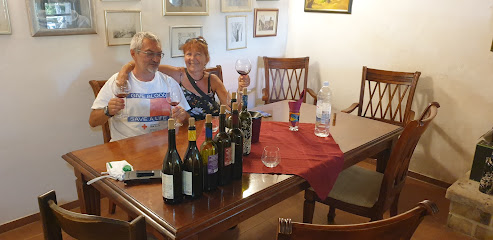
Wine Shop - OPG Glavor
Discover the essence of Croatian viticulture at OPG Glavor, a premier wine shop in the heart of Drače, offering a remarkable selection of local wines.
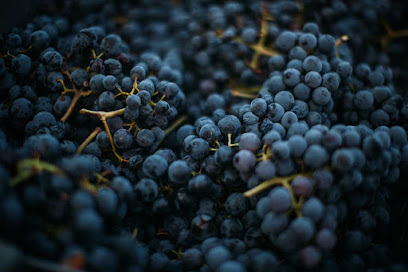
Plankton fish market
Discover the freshest seafood at Plankton Fish Market in Janjina, where local flavors and coastal charm come together for an unforgettable experience.
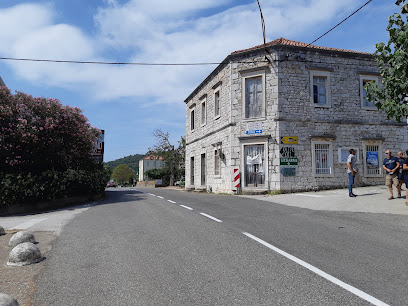
Vina Palihnić
Explore the exquisite wines of Vina Palihnić Winery in Kuna Pelješka, where tradition meets breathtaking scenery in the heart of Croatia.
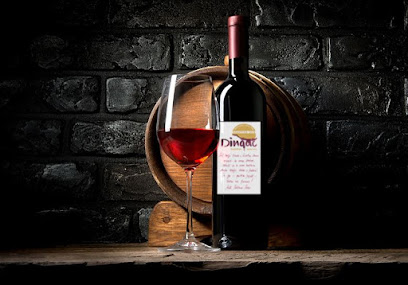
Grocery store
Experience the charm of Ston with a visit to its local grocery store, offering fresh produce and regional specialties that embody local culture.
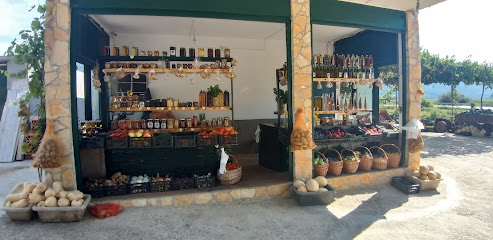
Tisak
Explore the charm of Ston at Tisak, your convenient stop for books, candies, and local specialties amidst stunning historical sites.
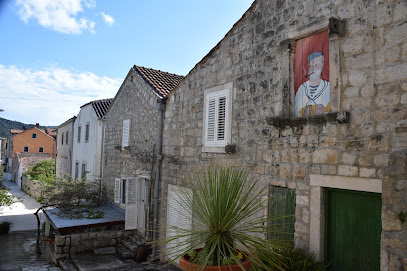
OPG PINCEVIC Homemade Products
Discover the essence of Croatian culture at OPG PINCEVIC, your go-to destination for homemade products and artisanal delights in Zabrđe.

Profiko d.o.o.
Discover unique picture frames and local craftsmanship at Profiko d.o.o. in Česvinica, perfect for art lovers and souvenir seekers.
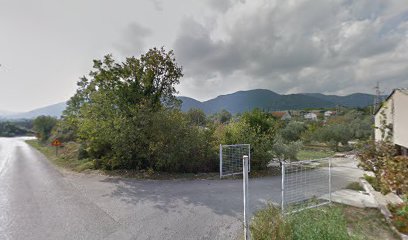
OPG Artur Medović - Vina Medović
Explore the rich flavors of Croatian wines at OPG Artur Medović, where tradition meets taste in the heart of Kuna Pelješka.
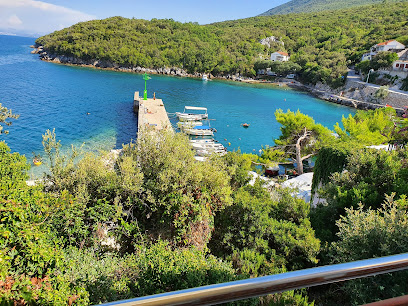
Market
Discover Trstenik's vibrant local market, where fresh produce and authentic Croatian delicacies await your taste buds.

Essential bars & hidden hideouts
Cafe Bar Tri Palme
Visit Cafe Bar Tri Palme for a unique blend of cocktails, live music, and delicious crepes in the heart of Orebić, Croatia.
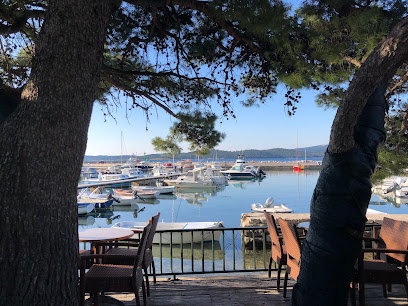
Bistro Cocktail Bar Academia
Experience the vibrant flavors and inviting atmosphere at Bistro Cocktail Bar Academia in the heart of Korčula Old Town.
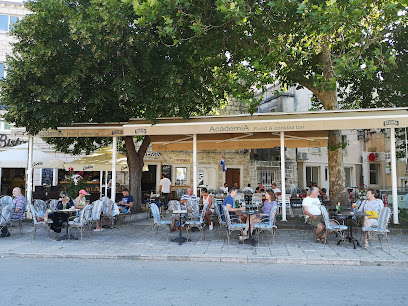
Edivo Wine Bar
Experience the best of Croatian wines at Edivo Wine Bar in Drače - where local flavors and scenic views meet.
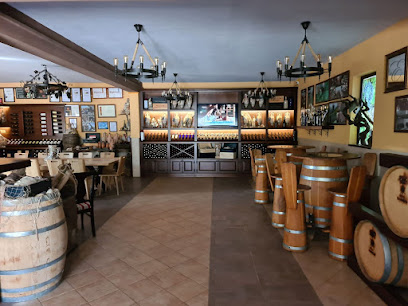
Badija caffe & restaurant
Discover the beauty of Badija Island at Badija Caffe & Restaurant, where delicious local cuisine meets breathtaking views.
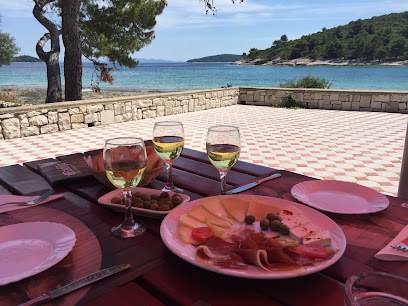
PUB NORDES
Discover the unique flavors of Korčula at Pub Nordes, a charming gastropub offering a delightful selection of local brews and delicious dishes.
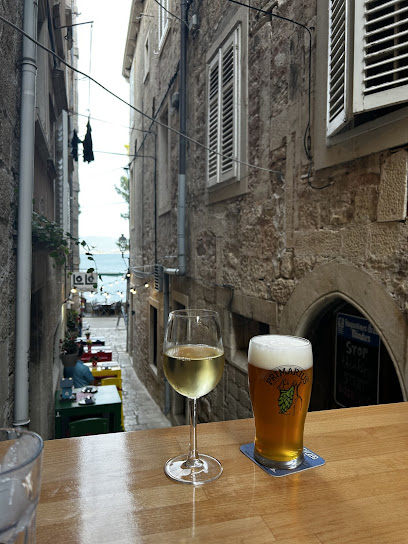
Beach Bar Adriatic
Experience the taste of the Adriatic at Beach Bar Adriatic, where fresh seafood meets stunning seaside views in Orebić.
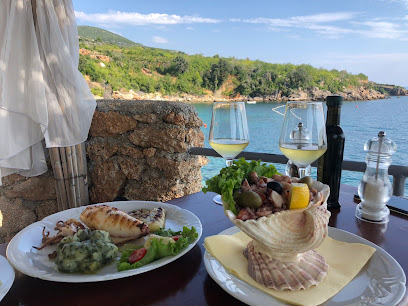
Oyster Bar Bebek
Discover the best of Adriatic seafood at Oyster Bar Bebek, where fresh flavors and stunning views come together in Mali Ston.
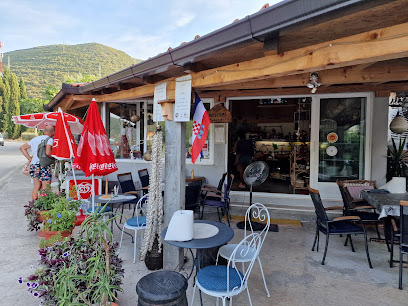
Skafet, Caffe Bar
Discover the serene ambiance of Skafet, Caffe Bar in Žuljana, where stunning Adriatic views meet delightful drinks.
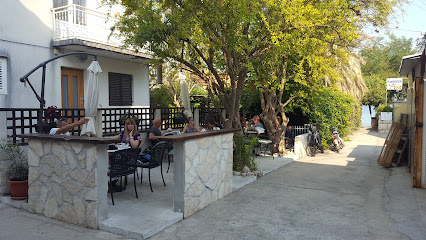
Peninsula d.o.o.
Discover the essence of Croatian wine culture at Peninsula d.o.o., a charming wine bar in Oskorušno offering exquisite local wines and a cozy atmosphere.
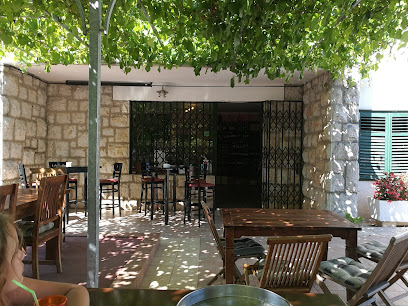
Wine Bar Cardo Ston
Experience the essence of Croatian wine culture at Wine Bar Cardo Ston, a cozy destination for wine lovers and travelers seeking local flavors.
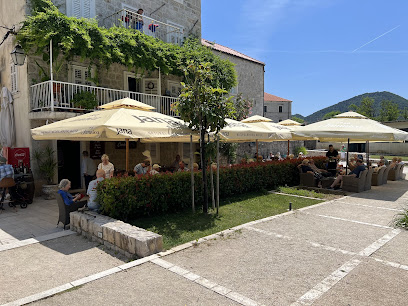
Beach bar Nevio - Camping Nevio
Experience the enchanting atmosphere of Beach Bar Nevio in Orebić, where sun, sea, and refreshing beverages await travelers.
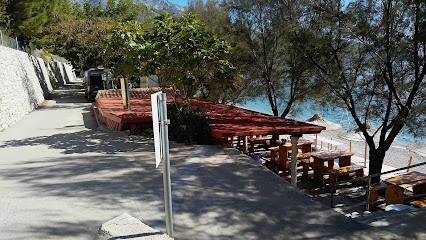
BARić
Experience the exquisite charm of BARić in Korčula, where exceptional wines and stunning views create unforgettable memories.
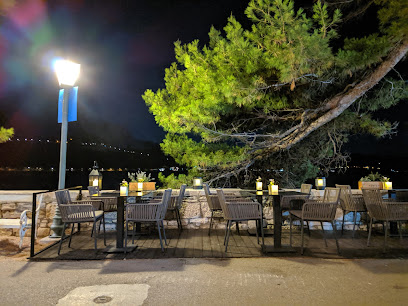
Beach Bar Office
Experience the ultimate beachside relaxation at Beach Bar Office in Ston, where stunning views and refreshing drinks meet the charm of Croatia’s coastline.
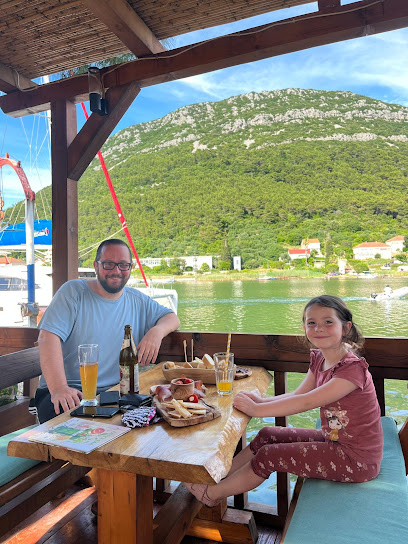
Monte Cristo Wines
Experience the essence of Croatian winemaking at Monte Cristo Wines, a charming wine bar in Kuna Pelješka offering exquisite local selections.
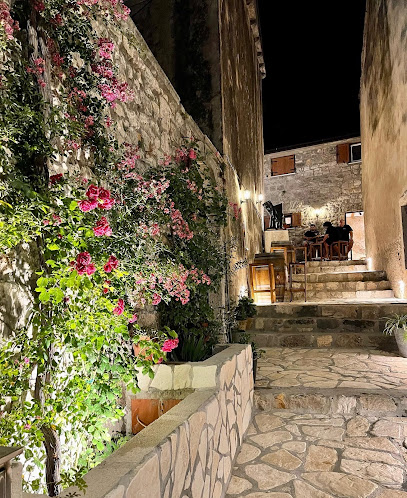
Caffe bar Pauza
Discover the charm of Caffe Bar Pauza in Orebić, where delightful drinks and a welcoming atmosphere await travelers seeking relaxation.
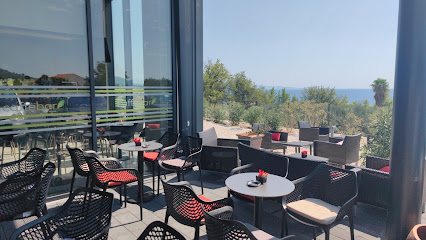
Local Phrases about Peljesac Peninsula
-
- HelloBok
[Bohk] - GoodbyeDoviđenja
[Dov-ee-jen-ya] - YesDa
[Dah] - NoNe
[Neh] - Please/You're welcomeMolim
[Moh-leem] - Thank youHvala
[Hvah-lah] - Excuse me/SorryOprosti
[Oh-pros-tee] - How are you?Kako si?
[Kah-koh see] - Fine. And you?Dobro. A ti?
[Doh-bro. Ah tee] - Do you speak English?Govoriš li engleski?
[Go-vo-reesh lee eng-les-kee] - I don't understandNe razumijem
[Neh rah-zoo-mee-yem]
- HelloBok
-
- I'd like to see the menu, pleaseMogu li vidjeti jelovnik, molim
[Moh-goo lee veed-yet-ee yeh-lov-neek, moh-leem] - I don't eat meatNe jedem meso
[Neh yeh-dem meh-so] - Cheers!Zivjeli!
[Zhee-vyeh-lee] - I would like to pay, pleaseŽelim platiti, molim
[Zheh-leem pla-tee-tee, moh-leem]
- I'd like to see the menu, pleaseMogu li vidjeti jelovnik, molim
-
- Help!Pomoć!
[Poh-mohtch] - Go away!Idi odavde!
[Ee-dee oh-dahv-deh] - Call the Police!Pozovi policiju!
[Poh-zoh-vee poh-lee-tsee-yoo] - Call a doctor!Pozovi doktora!
[Poh-zoh-vee dohk-toh-rah] - I'm lostIzgubljen sam
[Eez-goob-lyen sahm] - I'm illBolestan sam
[Boh-les-tahn sahm]
- Help!Pomoć!
-
- I'd like to buy...Želim kupiti...
[Zheh-leem koo-pee-tee] - I'm just lookingSamo gledam
[Sah-moh gleh-dahm] - How much is it?Koliko košta?
[Koh-lee-koh koh-shta] - That's too expensiveTo je preskupo
[Toh yeh preh-skoo-poh] - Can you lower the price?Možete li spustiti cijenu?
[Moh-zheh-teh lee spoos-tee-tee tsee-yeh-noo]
- I'd like to buy...Želim kupiti...
-
- What time is it?Koliko je sati?
[Koh-lee-koh yeh sah-tee] - It's one o'clockJedan je sat
[Yeh-dahn yeh saht] - Half past (10)Pola (deset)
[Poh-lah (deh-set)] - MorningJutro
[Yoo-troh] - AfternoonPopodne
[Poh-pohd-neh] - EveningVečer
[Veh-chehr] - YesterdayJučer
[Yoo-chehr] - TodayDanas
[Dah-nahs] - TomorrowSutra
[Soo-trah] - 1Jedan
[Yeh-dahn] - 2Dva
[Dvah] - 3Tri
[Tree] - 4Četiri
[Cheh-tee-ree] - 5Pet
[Peh-t] - 6Šest
[Shehst] - 7Sedam
[Seh-dahm] - 8Osam
[Oh-sahm] - 9Devet
[Deh-vet] - 10Deset
[Deh-set]
- What time is it?Koliko je sati?
-
- Where's a/the...?Gdje je...
[Gdyeh yeh] - What's the address?Koja je adresa?
[Koh-yah yeh ah-deh-sah] - Can you show me (on the map)?Možete li mi pokazati (na karti)?
[Moh-zheh-teh lee mee poh-kah-zah-tee (nah kahr-tee)] - When's the next (bus)?Kada je sljedeći (autobus)?
[Kah-dah yeh sleh-deh-chee (ow-toh-boos)] - A ticket (to ....)Jednu kartu (do...)
[Yehd-noo kahr-too (doh)]
- Where's a/the...?Gdje je...
History of Peljesac Peninsula
-
The Pelješac Peninsula, known in ancient times as 'Rata,' was inhabited by the Illyrians, a group of tribes who settled in the region around 1000 BC. Archaeological finds, including pottery and weapons, reveal their presence and contributions to early Adriatic culture. The Greeks also established colonies here, notably in the settlement of Ston, enhancing the region's strategic importance.
-
With the expansion of the Roman Empire, Pelješac fell under Roman rule in the 2nd century BC. The Romans recognized the strategic significance of the peninsula for trade and military purposes. They constructed roads, villas, and fortifications, remnants of which can still be observed today, particularly in the areas near Janjina and Trpanj.
-
During the medieval period, Pelješac became a contested territory. By the 14th century, it was under the control of the Republic of Ragusa (Dubrovnik), which fortified the peninsula to protect its valuable salt pans in Ston. The Great Wall of Ston, completed in the 15th century, is a testament to this era, serving as one of the longest defensive walls in Europe.
-
The 16th and 17th centuries were marked by frequent clashes between the Ottoman Empire and the Republic of Venice, with Pelješac caught in the middle. The peninsula's fortifications were repeatedly tested as both empires sought control over the Adriatic Sea. Despite these threats, Pelješac remained under Ragusan protection, thanks to its well-maintained defenses and strategic alliances.
-
In the early 19th century, the Napoleonic Wars reshaped the political landscape of Europe. Pelješac was briefly part of the French Empire after Napoleon's conquest of Dalmatia. Following Napoleon's defeat, the peninsula was incorporated into the Austrian Empire in 1815, under which it remained relatively stable and saw infrastructural improvements.
-
The 20th century brought significant upheaval to Pelješac, starting with the collapse of the Austro-Hungarian Empire after World War I. The peninsula became part of the Kingdom of Serbs, Croats, and Slovenes, later known as Yugoslavia. During World War II, Pelješac was occupied by Italian and German forces. Post-war, it was integrated into socialist Yugoslavia, experiencing economic changes and modernization.
-
With the dissolution of Yugoslavia in the early 1990s, Pelješac became part of the newly independent Republic of Croatia. The peninsula has since flourished as a cultural and tourist destination, known for its vineyards, olive groves, and rich maritime heritage. The construction of the Pelješac Bridge, completed in 2022, has further enhanced its connectivity and accessibility.
Peljesac Peninsula Essentials
-
Peljesac Peninsula is located in the southern part of Croatia, in the Dubrovnik-Neretva County. The nearest international airport is Dubrovnik Airport (DBV), approximately 100 kilometers away. From Dubrovnik, you can take a bus or rent a car to reach the peninsula. There are also ferry services from the mainland to the peninsula, with Jadrolinija being the main ferry operator. The drive from Dubrovnik to Peljesac takes about 1.5 to 2 hours, offering scenic views along the Adriatic coast.
-
Transportation within Peljesac Peninsula is primarily facilitated by local buses, taxis, and rental cars. The peninsula is well-connected by a network of roads, making it easy to explore by car. Buses operated by Libertas Dubrovnik connect the main towns and villages. For a more flexible and convenient option, renting a car is highly recommended. Additionally, bicycles are available for rent in some areas, allowing for a more leisurely exploration of the picturesque landscapes.
-
The official currency in Croatia is the Croatian Kuna (HRK). Credit cards are widely accepted in hotels, restaurants, and larger shops, but it is advisable to carry some cash, especially when visiting smaller establishments or rural areas. ATMs are available in major towns like Orebić and Ston. It is wise to withdraw sufficient cash before heading to more remote areas to ensure you have enough funds for your trip.
-
Peljesac Peninsula is generally safe for tourists. However, as with any travel destination, it is important to take standard precautions. Avoid walking alone at night in unfamiliar areas and keep an eye on your belongings in crowded places. There are no specific high-crime areas targeting tourists, but it is always best to stay vigilant and aware of your surroundings. Petty theft can occur, so ensure your valuables are securely stored.
-
In case of emergency, dial 112 for immediate assistance, which is the general emergency number in Croatia. There are local police stations and medical facilities available in towns like Orebić and Ston. It is recommended to have travel insurance that covers medical emergencies. Pharmacies are available in larger towns where you can purchase over-the-counter medications for minor health issues.
-
Fashion: Do dress modestly, especially when visiting religious sites. Avoid wearing overly revealing clothing. Religion: Do respect local customs and traditions. Always cover your shoulders and knees when entering churches. Public Transport: Do be respectful and give up your seat to elderly passengers. Don’t eat or drink on public transport. Greetings: Do greet people with a handshake. A friendly 'Dobar dan' (Good day) is always appreciated. Eating & Drinking: Do try local delicacies and accept food offerings graciously. Don’t refuse hospitality, as it is considered impolite.
-
To experience Peljesac Peninsula like a local, visit the local markets where you can buy fresh produce and traditional Croatian goods. Engage with locals, as they are often friendly and willing to share stories about the region's history and culture. Don’t miss visiting the Ston Walls, the longest fortress system in Europe. For wine enthusiasts, a visit to the local wineries in the Dingač and Postup regions is a must, as Peljesac is renowned for its excellent wines. Also, try the local seafood, especially oysters from Mali Ston.
Nearby Cities to Peljesac Peninsula
-
Things To Do in Mostar
-
Things To Do in Makarska
-
Things To Do in Trebinje
-
Things To Do in Hvar
-
Things To Do in Herceg Novi
-
Things To Do in Perast
-
Things To Do in Tivat
-
Things To Do in Kotor
-
Things To Do in Nikšić
-
Things To Do in Split
-
Things To Do in Cetinje
-
Things To Do in Budva
-
Things To Do in Trogir
-
Things To Do in Sarajevo
-
Things To Do in Podgorica






